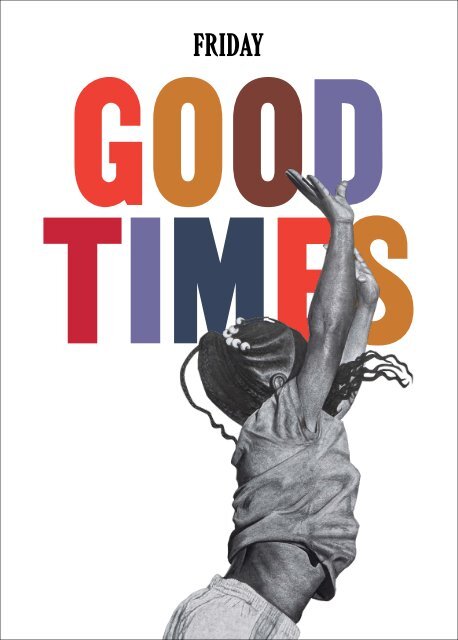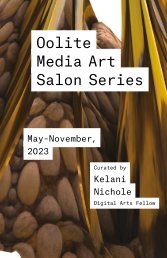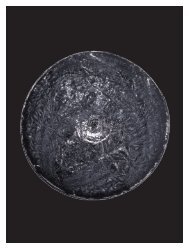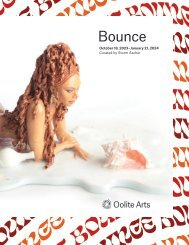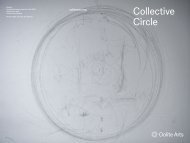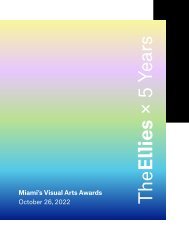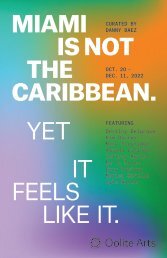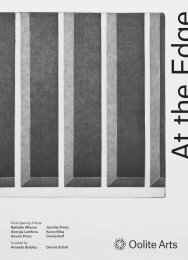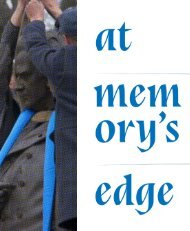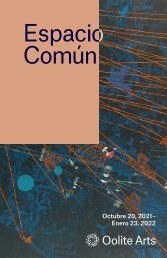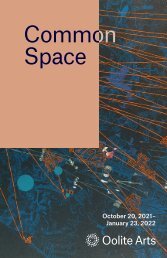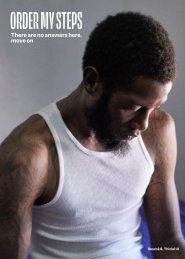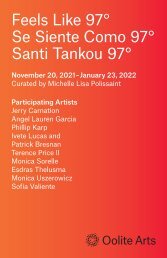Good Times: Friday
In Good Times, multi-disciplinary artist Chris Friday continues her exploration of the depiction of Black bodies and their presence/absence in contemporary space. Sourcing personal narratives, expressions of popular culture, and communal ritual, Friday utilizes drawing, video, illustration, sound, and ceramic sculpture to create installations that prompt the viewer to consider more expansive notions of blackness and where communities – known and unknown – are given a space to dialogue, reflect, and celebrate. Friday’s subjects – family, friends, colleagues – and the settings in which they exist, become mechanisms to unsettle traditional hierarchies and arrangements of power. In particular, she presents large-scale drawings of figures in acts of leisure – playing, dancing, resting – that refuse full exposure in a slight but noticeable turning away from the viewer. By placing them in the public realm (i.e. the gallery space), but limiting access to their interiority, Friday’s works inhabit a liminal space that is at once visible and hidden, silent and defiant.
In Good Times, multi-disciplinary artist Chris Friday continues her exploration of the depiction of Black bodies and their presence/absence in contemporary space. Sourcing personal narratives, expressions of popular culture, and communal ritual, Friday utilizes drawing, video, illustration, sound, and ceramic sculpture to create installations that prompt the viewer to consider more expansive notions of blackness and where communities – known and unknown – are given a space to dialogue, reflect, and celebrate.
Friday’s subjects – family, friends, colleagues – and the settings in which they exist, become mechanisms to unsettle traditional hierarchies and arrangements of power. In particular, she presents large-scale drawings of figures in acts of leisure – playing, dancing, resting – that refuse full exposure in a slight but noticeable turning away from the viewer. By placing them in the public realm (i.e. the gallery space), but limiting access to their interiority, Friday’s works inhabit a liminal space that is at once visible and hidden, silent and defiant.
- No tags were found...
You also want an ePaper? Increase the reach of your titles
YUMPU automatically turns print PDFs into web optimized ePapers that Google loves.
GOOD<br />
TIMES<br />
FRIDAY
<strong>Friday</strong><br />
GOOD TIMES<br />
Curated by Laura Novoa<br />
I<br />
George Floyd changed everything.<br />
The debates and rationalizations that followed his<br />
murder made Chris <strong>Friday</strong> tired. The need to explain<br />
the obvious felt Sisyphean—and the tiredness felt<br />
existential, historical. It was not something that a nap<br />
or social media break could fix. So <strong>Friday</strong> turned<br />
inward, and her figures did too.<br />
Before George Floyd, <strong>Friday</strong>’s artwork was an<br />
expression of her own willingness to engage audiences<br />
in conversations about race, Black bodies, and<br />
their presence/absence in contemporary space. She<br />
assumed the role many Black artists take in having to<br />
explain their work, to justify its intrinsic value by<br />
framing it through a moral or political lens. In earlier<br />
works, like Just for Me (2019) and Martyr (2018), the<br />
figures are compositionally open—facing the viewer<br />
in a way that invites questions and dialogue. In the<br />
latter, a Pietà-like figure sits on a rocky pile of dollar<br />
bills, decked in Jordans, hair freshly styled, thick<br />
chains adorning her neck. She cradles a thin, shirtless<br />
man, possibly hurt, passed out, or worse. Despite the<br />
weight of the slack body on top of her, she exudes a<br />
sense of calm intensity. Nothing about her hints at the<br />
violence or chaos that prompted this scene.<br />
<strong>Friday</strong>’s use of the Pietà, a long-established<br />
visual trope, and her insertion of Black bodies in an<br />
art historical context, as done notably by contemporary<br />
artists Kerry James Marshall and Kehinde Wiley,<br />
is a direct affront to the legitimacy of the historical<br />
record by explicitly pointing to its gaps. She undermines<br />
the grip of ownership that Christianity as<br />
practiced in white communities has long held on the<br />
Pietà and reaffirms the tableau as a symbol of<br />
maternal love and devotion in the image of Black<br />
bodies. What could be more humane than allowing a<br />
man to be held as he dies in his mother’s arms?<br />
George Floyd died pleading for his mother.<br />
Asphyxiated and held down by a man with a knee on<br />
his neck.<br />
IN/VISIBLE MEN/D<br />
2021<br />
Chalk on black archival paper<br />
II<br />
During one of our first studio visits, <strong>Friday</strong> and I were<br />
talking about her recent work and we came upon a<br />
figure she had made as part of the In/Visible Men/d<br />
series (2021). The drawing is of a young man wearing<br />
a collared shirt and ripped jeans, one leg bent over<br />
the other. His left hand is tucked into his pocket, the<br />
other holding his forehead, fingers lightly interlaced<br />
with short dreads falling over his face. He seems tired<br />
and leans his thin frame over slightly to hold<br />
himself up.<br />
I remember when <strong>Friday</strong> began working on this<br />
piece, during a residency in the summer of 2021. Over<br />
the course of twelve weeks, I saw the figure take<br />
shape from a swath of black paper, never imagining<br />
that something so large and detailed would emerge.<br />
The creases in his clothing and the veins running<br />
down his arms are sculpturally rendered. The downturn<br />
in his shoulders makes him seem both heavy and<br />
fragile, imposing yet deflated. I liked walking into the<br />
space and seeing him, a constant fixture during those<br />
hot summer months, not wanting to be disturbed and<br />
disturbing no one. Sometimes I felt like I was intruding<br />
on him as he was taking a moment to rest—to put<br />
his head down and close his eyes—after a long shift at<br />
work or a late night out.<br />
It struck me to hear from <strong>Friday</strong> that someone<br />
visiting her studio had found the figure menacing. Even<br />
in moments of obvious vulnerability, Black people,<br />
particularly Black men, are perceived as dangerous. I<br />
wondered what about the figure had prompted this<br />
fear and contempt. Was it the scale of the work? Was it<br />
the fact that we cannot see his face? Or was it because<br />
the figure depicted is of a Black person?<br />
In a conversation for the African American<br />
Studies Department at Princeton University, scholar<br />
and author Tina Campt calls for “a practice of looking<br />
that positions you [the viewer] in relationship to<br />
blackness regardless of whether or not you are<br />
Black.”1 For Campt, it is not about presenting a Black<br />
perspective or vantage point; rather, it is about<br />
generating a framework that places us in relation to<br />
blackness by “profoundly registering it, forcing us to,<br />
in many cases, be uncomfortable with our proximity<br />
to that precarity.”2<br />
Art is about confrontation. It solicits a response<br />
and requires us to recognize if and how we are<br />
implicated. Why the visitor responded the way they<br />
did to <strong>Friday</strong>’s work is not in question. What is in<br />
question is how they chose to act upon their response.<br />
1. Tina Campt, interview with Mélena Laudig and Collin Riggins,<br />
Department of African American Studies, Princeton University,<br />
podcast audio, June 16, 2022, https://aas.princeton.edu/news<br />
/aas-podcast-season-2-episode-8-black-gaze.<br />
2 2. Campt interview.<br />
3
III<br />
The pressure’s taking over me, it’s beginning to loom<br />
Better if I spare your feelings and tell you the truth<br />
Lately, I redirected my point of view<br />
You won’t grow waitin’ on me . . .<br />
[Chorus]<br />
I choose me, I’m sorry . . .<br />
Do yourself a favor and get a mirror that mirror grievance<br />
Then point it at me so the reflection can mirror freedom3<br />
REST AS REPARATIONS SERIES<br />
UNTITLED, AALIJAH<br />
2022<br />
3. “Mirror,” track 18 on Kendrick Lamar, Mr. Morale & the Big Steppers,<br />
PGLang, Top Dawg Entertainment, Aftermath Entertainment, and<br />
4 Interscope Records, 2022.<br />
Chalk on black archival paper<br />
5
20 FEET TALL<br />
2021<br />
6 Chalk on black archival paper<br />
7
IV<br />
The deliberate gesture of turning away is a consistent<br />
element in <strong>Friday</strong>’s recent drawings. This “quotidian<br />
practice of refusal”4 involves limiting knowledge to<br />
something or someone, and is therefore an overt and<br />
defiant expression of the unwillingness to comply with<br />
the expected or the required.<br />
In 20 Feet Tall, the first of these drawings from<br />
2021, we see a woman who is presumably sleeping, her<br />
head resting lightly on a folded pillow, her right foot<br />
over her left knee, slack and relaxed. While the figure’s<br />
attempt at inconspicuousness is undermined by her<br />
scale, <strong>Friday</strong> disrupts the traditional dynamics of<br />
spectatorship by withholding visual information from<br />
the viewer and granting the woman anonymity.<br />
The figure gives us her back, and in so doing<br />
denies us the possibility of identifying or knowing her.<br />
20 Feet Tall is a direct challenge to the way we usually<br />
interact with images—as consumers who are granted<br />
full and unrestricted access to the things before us.<br />
Despite the title, which in its use of the word tall suggests<br />
that the figure will loom over us vertically, she<br />
extends herself horizontally along a wall, requiring that<br />
as viewers we situate ourselves in reference and<br />
deference to her, not the other way around.<br />
20 Feet Tall, like much of <strong>Friday</strong>’s work, exists in<br />
the public realm (in this case, the gallery space). Yet the<br />
work also occupies a space apart from and beyond the<br />
viewer. <strong>Friday</strong> positions her figures in such a way that<br />
their privacy is considered above all else. They inhabit a<br />
liminal space that renders them at once visible and<br />
hidden, public and private. They exist, in view of others<br />
but live in the comfort of their interiority. The freedom<br />
to decide how much to give or show of oneself is about<br />
reclaiming space, about determining how and why one<br />
may choose to assert or relinquish control, and to whom.<br />
IN/VISIBLE MEN/D<br />
2021<br />
Chalk on black archival paper<br />
8 4. Campt interview.<br />
9
V<br />
George Floyd changed everything.<br />
His death showed how viscerally and publicly Black<br />
bodies exist in relation to violence, struggle, dispossession,<br />
and disposability. The intimacy and sanctity of his<br />
death became a mediated spectacle, captured on our<br />
phones, shared and reshared, solidifying problematic<br />
and pervasive misrepresentations of Black bodies and<br />
blackness.<br />
What if, instead, we see Black bodies embodying<br />
leisure? What if they lie softly in a field of flowers or<br />
jump energetically into the clouds? In Untitled, Courtney<br />
(2022), <strong>Friday</strong> draws a young girl in sequence. First, she<br />
is captured with arms stretched upwards, her legs<br />
crossed at the ankle; then her arms swing back and she<br />
brings her legs up, knees bent, high and off the ground.<br />
Finally, her arms are pulled back as far as they can go,<br />
legs straight. She is playing. But against the ambiguous<br />
setting of a white gallery wall, she looks like she’s flying.<br />
<strong>Friday</strong> drew Untitled, Courtney in her usual<br />
chalkboard aesthetic—precisely detailing the folds of<br />
her shirt, her muscles and ligaments expanding and<br />
contracting as she jumps up and down, and long,<br />
singular strands of braided hair covering her face. In a<br />
recent exhibition, One More River (2022) in Clarksville,<br />
Tennessee, <strong>Friday</strong> placed Untitled, Courtney in a setting<br />
of simply rendered, comic book–style illustrations that<br />
reveal a cloud, birds, and the grassy banks of a river.<br />
The setting becomes a strategy that positions subjects<br />
in a determined space of <strong>Friday</strong>’s own making, while<br />
also challenging a set of assumptions and prescriptive<br />
understandings that condition their existence.<br />
<strong>Friday</strong>’s treatment of her figures, of the respect<br />
and generosity she grants them, is reminiscent of<br />
Jennifer Packer’s paintings of family and friends.<br />
“Packer’s work is interested, situated; it operates in<br />
compassionate and not spectacular relation to the<br />
people and environments that she paints.”5 Similarly,<br />
<strong>Friday</strong>’s figures, who are often of people close to her,<br />
are suffused with a sense of care that feels tactile,<br />
tangible. The attentiveness is palpable in the way she<br />
renders even the most minute of details.<br />
The placement of Black subjects in a context of<br />
care is for <strong>Friday</strong> both personal motivation and political<br />
stance. Untitled, Courtney and other works in the series<br />
illustrate the concept of “rest as reparations” not as a<br />
passive act, but rather, as an active commitment not<br />
merely to exist but to thrive.<br />
REST AS REPARATIONS SERIES<br />
UNTITLED, AMERIE<br />
2022<br />
REST AS REPARATIONS SERIES<br />
UNTITLED, COURTNEY<br />
2022<br />
FOLLOWING SPREAD<br />
5. Christina Sharpe, “Jennifer Packer: ‘Abundant with Light,” in The Eye is<br />
Installation view of One More River exhibition at<br />
Not Satisfied with Seeing, eds., Melissa Blachflower and Natalia<br />
10 Grabowska (London: Serpentine, 2021), 14.<br />
Chalk on black archival paper<br />
Chalk on black archival paper<br />
11<br />
The New Gallery in Clarksville Tennessee, 2022
12 13
VI<br />
Temporary layoffs.<br />
<strong>Good</strong> <strong>Times</strong>.<br />
Easy credit rip-offs.<br />
<strong>Good</strong> <strong>Times</strong>.<br />
Scratchin’ and survivin’.<br />
<strong>Good</strong> <strong>Times</strong>.<br />
Hangin’ in and jivin’.<br />
<strong>Good</strong> <strong>Times</strong>.<br />
Ain’t we lucky we got ’em<br />
<strong>Good</strong> <strong>Times</strong>.6<br />
SIT DOWN SOMEWHERE<br />
2022<br />
Cotton, burlap<br />
GIMME SOME SUGAR<br />
2022<br />
Cotton, burlap<br />
VII<br />
Chris <strong>Friday</strong>: You know that auction at Christie’s? It<br />
was called “Say it loud!” And of course, the ending of<br />
that phrase is, “I’m Black and I’m proud!” Just the<br />
reference to it was enough for the mind to complete it.<br />
The show needs a title like that.<br />
Something that includes the themes of joy, rest,<br />
and privacy for Black bodies in a society that affords<br />
them very little, while acknowledging the origins of<br />
those perceptions (television) and how it affects what<br />
we’re seeing when we look at Black bodies.<br />
For example, the projection/video that I thought<br />
about making was one in which very benign everyday<br />
scenes are taking place but the “laugh track” or<br />
audience sounds are contextualizing what you see.<br />
Laura Novoa: The jarring feeling of the visual and<br />
the audio not really coinciding.<br />
CF: Exactly. And figuring out how to bring that into the<br />
drawn figures as well.<br />
I was thinking about music that switches back<br />
and forth. Like is this the sugar shack or is it a church?<br />
Are these bodies twerking or catching the Holy Ghost?<br />
LN: Lmaooo. Maybe they’re one and the same!<br />
CF: Lmaooo. I wanna make figures that walk that line,<br />
so you won’t be able to tell.<br />
6. “<strong>Good</strong> <strong>Times</strong>,” music by Dave Grusin; lyrics by Alan and Marilyn Bergman;<br />
sung by Jim Gilstrap and Blinky Williams; theme song/opening credits<br />
14 for the television sitcom <strong>Good</strong> <strong>Times</strong>, CBS, premiered 1974.<br />
15
VIII<br />
<strong>Friday</strong><br />
spent many late evenings throughout her<br />
childhood watching the ’70s “sitcom” <strong>Good</strong> <strong>Times</strong>. In<br />
the opening credits, the theme song is a call and<br />
response giving sound to the scenes of the city before<br />
landing on a drawn portrait of the Evans family. It runs<br />
down a list of social and economic hardships sarcastically<br />
categorizing them as “good times.”<br />
This conflicting duality, captured concisely in the<br />
theme song, but present in the overall premise of the<br />
show brings up complicated feelings for <strong>Friday</strong>. As a kid,<br />
it was difficult to assimilate her reality with the mediated<br />
portrayal of the Evans family, one much like her<br />
own, struggling to “just live” and having that struggle,<br />
broadcast on television to millions, framed as a comedy.<br />
Now, as an adult, <strong>Friday</strong> realizes that humor in<br />
shows like <strong>Good</strong> <strong>Times</strong> is a way to disarm and charm<br />
audiences, specifically white audiences, into seeing the<br />
humanity of the characters on screen. It disguises<br />
pervasive and systemic injustices as experienced by<br />
Black folks, into something consumable and easy to<br />
watch. Simultaneously, humor is an effective way to<br />
relay information about lived experiences without the<br />
backlash, disbelief, or defensiveness sharing such<br />
experiences usually incites.<br />
<strong>Friday</strong> has developed work that employs, but<br />
also departs from, the traditional use of humor as<br />
coping mechanism. In a recent exhibition of resident<br />
artists at Oolite Arts, Lean-To (2022), <strong>Friday</strong> installed<br />
ceramic pieces from her Supplement Archive series<br />
(2019–present), an ongoing exploration that functions<br />
as a material inventory of Black iconography and<br />
cultural symbols. Dishes of rice and beans and macaroni<br />
and cheese and fried chicken, a gleaming burger<br />
patty with cheese on sliced bread, a can of peach soda,<br />
and a bag of salt and vinegar-flavored chips sit carefully<br />
on shelves. Annotations including arrows, circles,<br />
asterisks, and phrases like “We got food at the house”<br />
and “In the absence of McDonald’s money” are<br />
scrawled around the objects, grounding them in the<br />
home and family.<br />
There is humor, but also a sense of tenderness,<br />
that radiates from these snippets of dialogue, likely<br />
uttered by moms, aunties, grandmothers, older cousins—figures<br />
that project both a sense of authority and<br />
love. In this particular iteration of Supplemental<br />
Archive, food is both physical and spiritual nourishment,<br />
consumed at a cookout after a Church gathering<br />
or out of the window of an ice cream truck with friends.<br />
Food and the rituals that accompany it become an<br />
indispensable part of both the quotidian and ceremonial<br />
aspects of Black social life.<br />
<strong>Friday</strong>’s work is less about amusing or indulging<br />
and more about creating the space for an inside joke;<br />
she uses language to communicate in a way that is<br />
relevant only to those who understand it and perhaps<br />
illegible and nonsensical to those who don’t. Like her<br />
drawings, there is a turning away or turning inwards<br />
that gestures towards a sense of privacy and specificity,<br />
that prioritizes care and love for oneself and one’s<br />
community first and foremost.<br />
SUPPLEMENT ARCHIVE<br />
2019–2022<br />
Kiln-fired ceramic<br />
16 17
SUPPLEMENT ARCHIVE<br />
2019–2022<br />
Kiln-fired ceramic<br />
18 19
SUPPLEMENT ARCHIVE<br />
2019–2022<br />
Kiln-fired ceramic<br />
20 21
IX<br />
Narrative<br />
restraint, the refusal to fill in the gaps and<br />
provide closure, is a requirement of this method, as is<br />
the imperative to respect black noise—the shrieks, the<br />
moans, the nonsense, and the opacity, which are always<br />
in excess of legibility and of the law and which hint at<br />
and embody aspirations that are wildly utopian, derelict<br />
to capitalism, and antithetical to its attendant discourse<br />
of Man.7<br />
INTERIOR 2:<br />
FIGURES LOUNGING<br />
2022<br />
Installation view of Front room<br />
exhibition at the NWSA Gallery in<br />
Miami, Florida<br />
X<br />
In her essay, Venus in Two Acts, scholar and historian<br />
Saidiya Hartman speaks to the limits of the historical<br />
archive. How can one negotiate and push against these<br />
limits in a way that challenges the boundaries of our<br />
own understanding? How do we honor what has been<br />
said, as much as what has been left unsaid?<br />
<strong>Friday</strong>’s work is not a means of explaining or<br />
justifying blackness or of making a case for the significance<br />
of Black art. On the contrary, <strong>Friday</strong>’s work<br />
stands against the “excess of legibility” and firmly roots<br />
itself in the “right to opacity.”8 She establishes a<br />
practice based on the use of the inward turn, of finding<br />
comfort in interiority, of grounding her work in the<br />
textures of everyday life, and of privileging everyday<br />
moments as liberatory. She doesn’t reject the inevitability<br />
of a life conditioned by scarcity or precarity;<br />
rather, she denies an existence wholly defined by it.<br />
Within this framework, she presents a more personal<br />
and nuanced perspective of good times, not as a<br />
sarcastic resignation to the expected, but as a spectrum<br />
of realities that accommodates a varied and<br />
dynamic set of lived experiences.<br />
<strong>Friday</strong>’s aesthetic, its visual expression and<br />
political impulse, is supplemental in the way that it<br />
enhances the preexisting and ongoing archive of<br />
accumulated images. She proposes a more expansive<br />
view of Black life as a counterpoint or counternarrative<br />
to the images we come across in the mass media. Her<br />
work is more attuned to the complexities—to the good<br />
times and the bad times—that define life itself.<br />
ACKNOWLEDGMENTS<br />
Chris <strong>Friday</strong> is an artist whose works claim space and<br />
demand presence. Utilizing a variety of media and<br />
materials and combining both personal narratives and<br />
popular culture, <strong>Friday</strong>’s artistic practice is thoughtful<br />
and powerful.<br />
We are honored to present her first solo exhibition<br />
curated by Laura Novoa. We are thankful to Laura for<br />
her continuous support of <strong>Friday</strong>’s practice and vision.<br />
Through countless conversations and studio visits<br />
together, they created <strong>Good</strong> <strong>Times</strong>, a tour de force<br />
of joy.<br />
Our mission at Oolite Arts is—as our founder,<br />
Ellie Schneiderman, said, “to help artists help themselves.”<br />
We foster the growth of artists through<br />
exhibitions, public programs, short- and long-term<br />
residencies, professional development, direct funding,<br />
and publications.<br />
Cover and back cover: Untitled, Courtney (detail), 2022.<br />
Chalk on black archival paper<br />
All artworks © <strong>Friday</strong><br />
This exhibition and publication was made<br />
possible by contributions from many talented individuals.<br />
Many thanks to Amanda Bradley, Oolite Arts’<br />
Programming Senior Manager, for coordinating all<br />
facets of this publication and Samantha Ganter,<br />
Programs Coordinator, for her work on leading the<br />
production of the exhibition. I also want to express my<br />
gratitude to all the Oolite Arts staff who bring their<br />
passion and talents to our organization every day—<br />
along with our Board, whose members embrace<br />
and champion the dynamic vision for Miami arts that<br />
drives our work.<br />
Lastly, I would like to thank Rebecca Sylvers and<br />
Miko McGinty for designing this publication. We hope<br />
that this broadsheet will continue to serve the artist<br />
well beyond the length of the exhibition and push her<br />
practice forward in critical and thoughtful ways.<br />
Dennis Scholl<br />
Oolite Arts<br />
STAFF<br />
Dennis Scholl<br />
President and CEO<br />
Anais Alvarez<br />
Communications & Development Sr.<br />
Manager<br />
Amanda Bradley<br />
Programming Sr. Manager<br />
David Correa<br />
Programs Coordinator<br />
Cherese Crockett<br />
Development Sr. Manager<br />
Maylin Enamorado-Pinheiro<br />
Digital Communications Coordinator<br />
Aaron Feinberg<br />
Chief Financial Officer<br />
Melissa Gabriel<br />
Art Classes Manager<br />
Samantha Ganter<br />
Programs Coordinator<br />
Esther Park<br />
Vice President of Programming<br />
Hansel Porras Garcia<br />
Executive Assistant<br />
Dan Weitendorf<br />
Facilities Manager<br />
Front cover; pp. 1, 4–7, 10–13; back cover:<br />
photo courtesy of Amir Aghareb<br />
BOARD OF DIRECTORS<br />
pp. 14–15, 22: photo courtesy of Monica McGivern<br />
pp. 20–21: photo courtesy of Alex Del Canto<br />
Eric Rodriguez<br />
Chair<br />
Marie Elena Angulo<br />
Vice Chair<br />
Maricarmen Martinez<br />
Secretary<br />
Kim Kovel<br />
Treasurer & Chair Emeritus<br />
Exhibitions and programs at Oolite Arts are made<br />
possible with support from the Miami-Dade County<br />
Department of Cultural Affairs, the Cultural Affairs<br />
Council, the Miami-Dade Mayor and Board of County<br />
Commissioners; the City of Miami Beach, Cultural<br />
Affairs Program, Cultural Arts Council; the State of<br />
Florida, Department of State, Division of Arts and<br />
Culture, the Florida Council on Arts and Culture; the<br />
National Endowment for the Arts; the Lynn & Louis<br />
Wolfson II Family Foundation, The Jorge M. Pérez<br />
Family Foundation at The Miami Foundation; the Al &<br />
Jane Nahmad Family Foundation, and the John S. and<br />
James L. Knight Foundation. Additional support<br />
provided by Walgreens Company.<br />
For more information, visit OoliteArts.org.<br />
Follow @oolitearts on social media.<br />
Germane Barnes<br />
Chloe Berkowitz<br />
Edouard Duval-Carrié<br />
Alessandro Ferretti<br />
Lilia Garcia<br />
Jane <strong>Good</strong>man<br />
Thomas F. Knapp<br />
Jeff Krinsky<br />
Lin Lougheed<br />
Reagan Pace<br />
Deborah Slott<br />
CATALOGUE CONTRIBUTORS<br />
Laura Novoa<br />
Essay and Curator<br />
Amanda Bradley<br />
Imprint Coordinator<br />
Miko McGinty Inc.<br />
Design<br />
ImPress<br />
Printing<br />
924 Lincoln Road, Miami Beach, FL 33139<br />
305-674-8278<br />
John Ewing<br />
Copy Editor<br />
7. Saidiya Hartman, “Venus in Two Acts,” small axe: a caribbean journal of<br />
criticism 12, no. 2 (2008): 12, https://read.dukeupress.edu/small-axe/<br />
article/12/2/1/32332/Venus-in-Two-Acts. (emphasis added)<br />
22 8. Sharpe, 15.<br />
23


